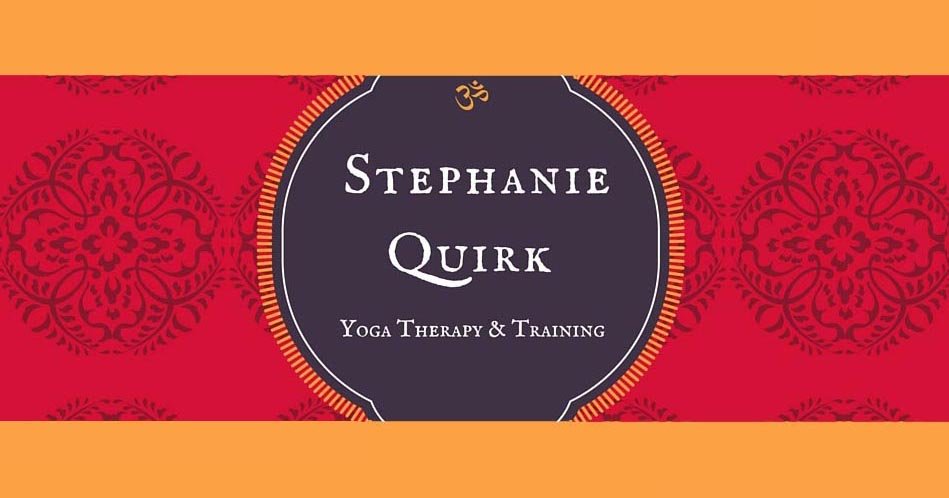
About
Stephanie Quirk is a world leader in the field of Yoga Therapeutics, having spent 20 years living, studying and working directly with the Iyengar family at the Ramanani Iyengar Memorial Yoga Institute (RIMYI) in Pune, India.
My first visit to the institute (RIMYI) in Pune was in Dec-Jan-Feb ‘91/’92. When I returned in 1994 I decided that I wanted to immerse myself fully into the Institute for a longer time. That longer time extended itself to more than 20 years . . . . . . . I stayed and I stayed.
Prior to Pune in 1991, I had begun yoga in Sydney Australia. I came to my first Yoga Studies from a background in art and a qualification in psychiatric nursing, I had been introduced to the initial stages of Dharma and Meditation practice. A large and defining influence to my first years of yoga study was that I was off and on crutches from accidents and re-constructive surgeries. A series of injuries which are a permanent part of my practices.
Being born in “the west”, means we come to a yoga practice from somewhere far away from any yoga tradition. When we choose to move and work with yoga we are taking a definite step. We are stepping outside of our societal roles and into the stream of human potential. We are seeking something not spoken of in our own society, it is a path that has its origins far from our own and comes from a deep, meaningful and profound tradition. There are many a student who comes to India, is moved by the depth of wise understanding conveyed through yoga and return clutching talismans of their experience. They take back effigies and idols, symbols of their new understanding.
But the yoga path itself is beyond these small mementos. Through its practice, we come to identify with a limitless experiential field. A field that simultaneously releases and absorbs our own learning process. It is here that observation has its key importance. It is through observation that we find entry into the deep course that is yoga. Observation, both of the outer relationships and the inner communion is vital for us in the practice of yoga. Knowledge from this direct and reflective observation builds, refines and sensitises our continued practice. Observation is central to the discipline of any artist, as well as to the path of yoga, whether in its sadhana or in the art of guiding and helping people.
As students and as teachers we all come from different backgrounds, different cultures¹. I like many others found yoga to be life changing. Yoga renews and recreates us, it sustains and it completes us. It is a peculiarity of the path of yoga that by going deeper into its practice we are qualified to practice it.²
Another very important element from my previous studies is that to help and guide students with ailments they need to be seen as whole; not as collections of signs and symptoms, and not just instances of right and wrong techniques. We need to search for the way the student can get the right understanding, the correct knowledge. It is this pursuit of right understanding that centralises my own studies. You could say that I see right understanding and self-knowledge as meeting at insight. In this way, the student arrives at a place of self-existent experience, the abode of the Self.
The longer I stayed and studied at the institute in Pune, the more I came to appreciate that the Iyengars were conveying to us so much more in practice and teaching than external technique and instructions.
Although I now have a lot of experience in the medical classes in Pune, still I have a very strong sense that it is the wholeness of yoga, its integrative effect, that brings balance and equanimity.
Finally and perhaps most importantly I came to yoga with an understanding that the path only truly opens once you whole heartedly immerse yourself in its practices. This ‘self-involvement’ is the most important part of the journey towards inner knowledge and connectedness with all layers of ourselves.
In the opening paragraph to the preface to his Light on the Yoga Sutras of Patanjali Guruji gives four things that yoga is and does. He says that it is a ‘science’ an ‘art’, a ‘philosophy’ and, lastly, ‘gives meaning and purpose’ to our lives. It is this last that I feel potentialises the others, it brings a lucid reality to our innerlives. Although I come from a “medical/psychology” as well as an “art” background, it is the “meaning and purpose” aspect of yoga that is the most important to my own involvement. It connects me to the path, to my Guru’s and to others who are with me on this path.
It is this dual stream of reflection and observation that holds and supports me. Fundamental to Iyengar Yoga is the applied methodology for a path that is essentially one of enquiry into the self, there is no way out of “doing-it”.
¹ One of the unique aspects of Gurujis method is that it has the capacity to go into the lives of all members of all societies.
² Hathayoga Pradipika (I. 65 & 66) – Yoga is not obtained by a mere reading of the scriptures (Shastra’s) . . . nor by wearing the dress [of a Yogin], or by talking about it; practice alone is the cause of success.
Need further information?
If you have any questions regarding upcoming workshops and classes, please contact me


